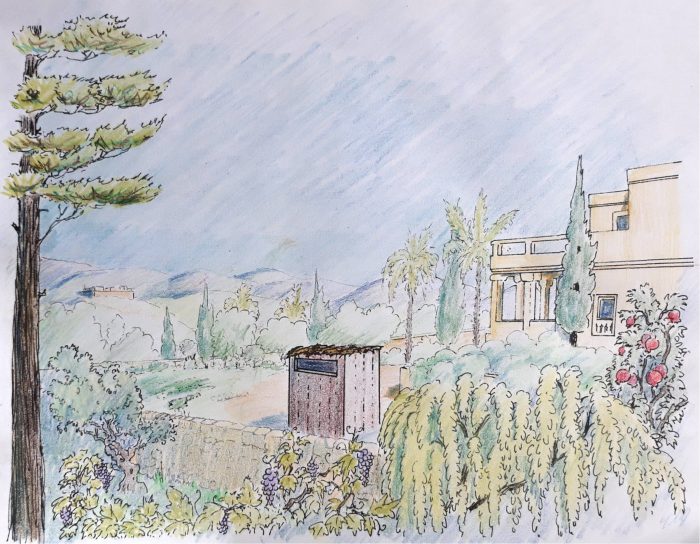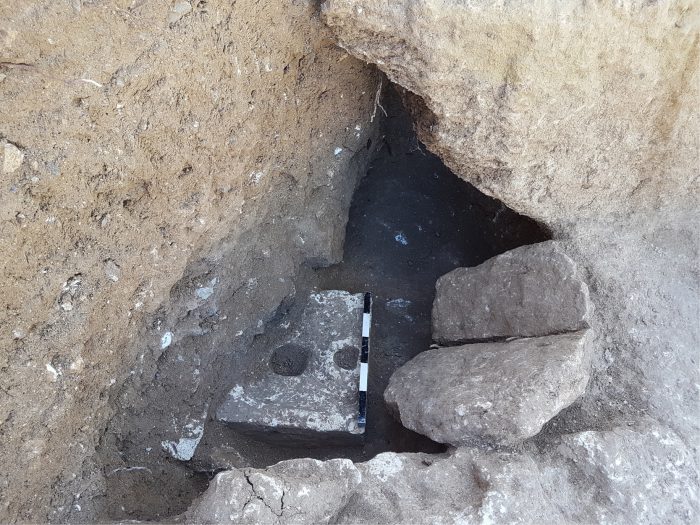Archeologists in Jerusalem have uncovered something rather gross. But also pretty fascinating.
Working on the site of a 2,700 year-old estate of a wealthy family, they uncovered an ancient toilet. That's not quite the gross part though. After all, at this time in history, having toilet on your own property was considered a real luxury. This was clearly the home of an important family in Jerusalem society.
But when the researchers invested the bottom of the toilet's pit, they found something rather unsavoury. Evidence of four different types of parasites!
The evidence suggests that the city was likely in the midst of a troublesome infection from these pests—and not even being wealthy enough to have your own toilet was able to keep them at bay.
The state of sanitation

This sketch reconstructs what the toilet might've looked like. Evidence says that it was in the midst of a lovely backyard garden. (Yaniv Korman)
Thousands of years ago, there was no running water and public sanitation (cleanliness to protect people from germs and infection) was not what it is now.
Most of the population would have 'gone to the bathroom' at public sites known as waste pits or middens. This was also a spot to dump food waste, like bones. Though this kept the nasty smells at a distance from where people lived, it was not very clean.
In the case of the rich, a private toilet might be built on the property. These would be drop toilets, where people would go to the bathroom over a deep pit. In this case, the pit was covered by a carved seat made of limestone. The toilet would not be inside the home, but just outside it— similar to an outhouse.
Though much nicer than an ancient midden or public restroom, the goal of the private, enclosed toilet wasn't sanitation according to the researchers. "The presence these private toilets may have been more a matter of convenience than an attempt to improve personal hygiene," they wrote in their study. "A toilet was a symbol of wealth."
Worming their way through history
That's why—wealthy or not—this particular family had to deal with a number of parasitic worms. The eggs found in sediment on the site belonged to roundworms, whipworms, tapeworms, and pinworms. These worms are all known to infect the intestines, stealing valuable nutrients from the food that humans eat and leaving them malnourished. Hey, those vitamins were mine, you thieving worms!
Parasites can move quickly through a population through undercooked meat, poorly disposed waste, and infected water supplies and crops. And, as this toilet proves, no one was safe.
Thankfully, modern sanitation has made parasitic worms much more rare in countries like Canada and the United States. But if you ever needed another reason to always wash your hands after using the bathroom, then the evidence found at this ancient toilet is it!
 The seat from the ancient limestone toilet. Nature calls! (Ya’akov Billig)
The seat from the ancient limestone toilet. Nature calls! (Ya’akov Billig)










😡 That is really gross…
Omg that’s gross ????